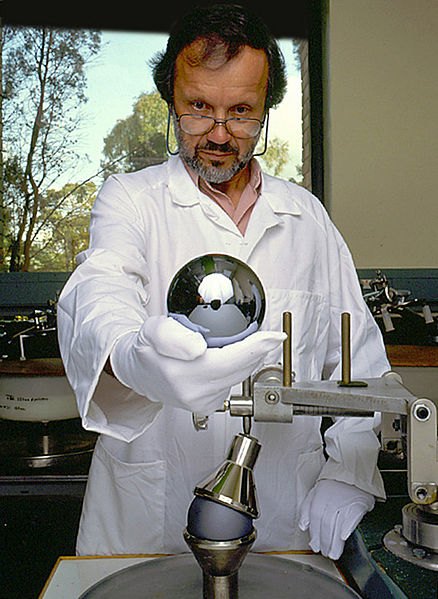Fichier:Sphere Si.jpg
Sphere_Si.jpg (438 × 599 pixels, taille du fichier : 75 kio, type MIME : image/jpeg)
A 1-kg single-crystal silicon sphere for the Avogadro Project is shown above in the hands of Master Optician Achim Leistner at the Australian Centre for Precision Optics (ACPO), which is part of Australia's Commonwealth Scientific and Industrial Research Organisation (CSIRO).
ACPO's spheres are among the roundest man-made objects on Earth. (The gyroscopes of Gravity probe B are equally round but are in orbit, not "on Earth".) If one of their Ø 93.6 mm spheres, which had an out-of-roundness of 35 nm, was scaled to the size of the Earth, its ‘continents’ would gradually rise only 2.4 meters above sea level. auteur: The Commonwealth Scientific and Industrial Research Organisation of Australia (Wikimedia commons)
Historique du fichier
Cliquer sur une date et heure pour voir le fichier tel qu'il était à ce moment-là.
| Date et heure | Vignette | Dimensions | Utilisateur | Commentaire | |
|---|---|---|---|---|---|
| actuel | 28 juin 2016 à 14:37 |  | 438 × 599 (75 kio) | Alice.thomas (discussion | contributions) | A 1-kg single-crystal silicon sphere for the Avogadro Project is shown above in the hands of Master Optician Achim Leistner at the Australian Centre for Precision Optics (ACPO), which is part of Australia's Commonwealth Scientific and Industrial Resear... |
Vous ne pouvez pas remplacer ce fichier.
Utilisation du fichier
Aucune page n’utilise ce fichier.
